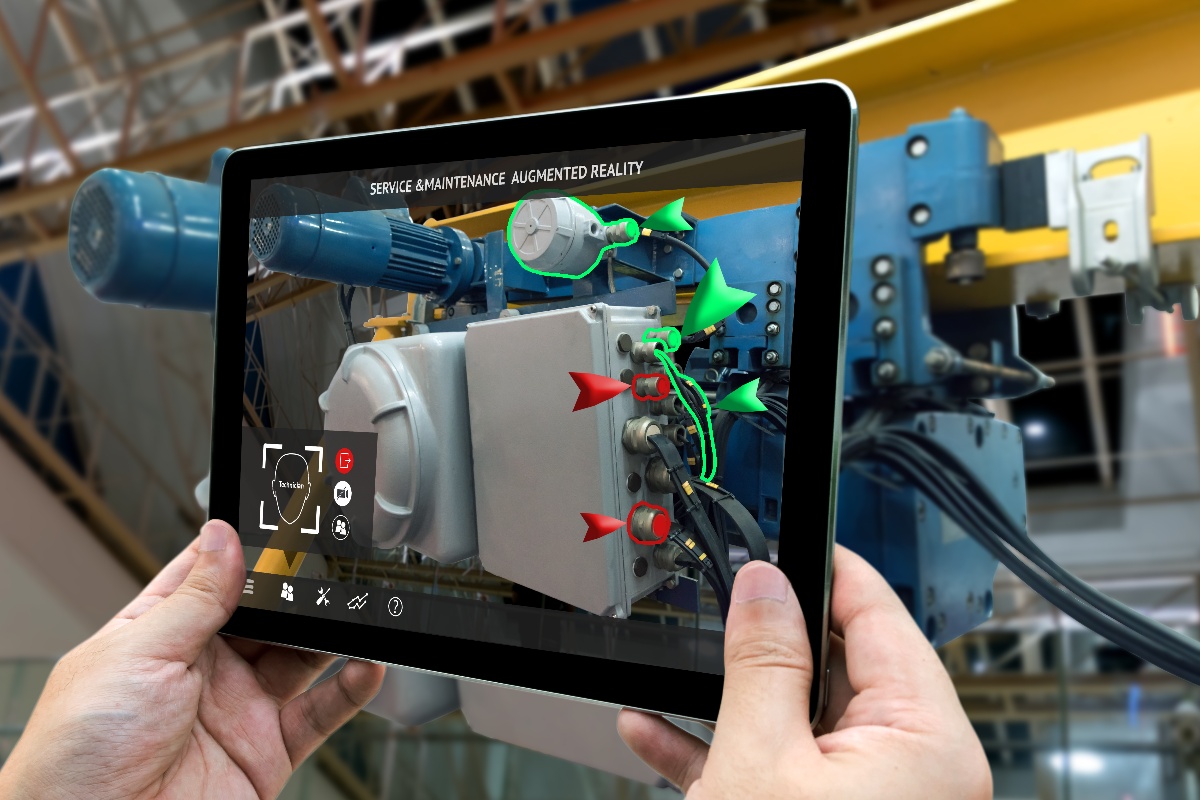
Composites are increasingly used in demanding applications that require high-performance characteristics like strength and durability. Key areas include the aerospace and automotive industries as well as infrastructure.
In these kinds of applications, lives often depend upon materials performing as designed, and failures can lead to tragedy. That’s why monitoring the health of materials in things like bridges and airplane wings is so important. These structures are frequently inspected to check for any signs of damage that could lead to failure.
The problem, however, is that not all damage or decay of materials can be visually detected. Sometimes dangerous changes are happening within a structure that gives no indication of their presence on the surface. This can be true, for example, in the corrosion of rebar in concrete.
Another challenge is the sheer amount of monitoring needed. It is difficult to deploy the resources required to adequately inspect all the structures and parts we ideally would like to.
A more and more common solution to these problems is to automate the monitoring of materials in critical applications through embedded sensors. In this article, we’ll give an overview of what embedded sensors are and how they are used in composites to enhance safety and performance.
What Are Embedded Sensors?
Embedded sensors are installed in a permanent fashion in the environment being monitored. Often, monitoring equipment is portable and brought to a location to test some parameters - like temperature. In contrast, embedded sensors are always there, continuously measuring a particular environmental variable.
These kinds of sensors have become increasingly common since around the year 2000 when the necessary technologies got small enough and cheap enough for embedded monitoring to make sense.
These systems come in various forms but typically include three components. First are sensors, which are designed to carefully measure some environmental variables like heat, temperature, humidity, light, movement, pressure, etc. These sensors communicate with a node (either directly or wirelessly), which is a simple computer that operates the sensor, stores data, and passes that information along to a third component, sometimes called a gateway, which communicates with a network. These functions can be integrated into one unit or can be three separate components.
What Are Embedded Sensors Used For?
The applications of this technology are legion. You may have heard of the “internet of things” (IoT); it is a network of physical objects that contain sensors and possibly other electronic components that allow them to share data over the internet. Think here of things like smart thermostats and appliances.
Embedded sensors are also useful in manufacturing. They can provide real-time data about things like material properties and machinery functions that allow manufacturers to optimize processes for greater efficiency and less downtime.
Another industry that is rapidly developing embedded sensor technology is the automotive sector, particularly autonomous vehicles. They require lots of real-time, accurate data about the environment and operating parameters of the automobile.
How Are Embedded Sensors Used in Composites?
When it comes to composite materials, in particular, two areas provide a good illustration of how the technology can be used.
Infrastructure: Bridges are a key component of our infrastructure and one whose performance is especially important since failure can cause significant problems. The US has around 617,000 bridges. Many of them are aging and in need of substantial maintenance. It is an overwhelming need. How can embedded sensors help?
They would be able to make inspections easier, more accurate, and timely. There have been numerous experiments involving embedding sensors within the concrete as a bridge or roadway is built to relay key information about what is happening deep within the structure. The sensors can measure things like strain, temperature, and the presence of salt (which is corrosive to both concrete and the rebar that reinforces it).
An early example is a bridge built in Austria in the first decade of the 2000s. They ran fiber-optic wires through the concrete and connected them to sensitive equipment able to measure very slight fluctuations caused by changes in the concrete in which they were embedded. A study published in 2003 details how they were able to successfully measure strain on the bridge structure using this technology. A more recent study gives a helpful overview of the various kinds of sensing technology currently being used.
The goal of these technologies is to give the kind of information necessary to accurately assess structural health and know when it is time to undertake repairs. They are also able to provide this data in an efficient way that does not require time-consuming manual inspections.
Wind power: The huge blades used in wind turbines are almost entirely made of composites — in particular, glass fiber reinforced polymers (GFRP). As wind power has become increasingly popular, there is an increasing need to both create more efficient manufacturing processes for these huge structures and to monitor installed equipment for signs of wear and damage.
Recent research led by GE examined techniques for embedding sensors within the composites forming turbine blades. There are significant design challenges here; the sensors need to be small and thin enough that they do not detract from the strength of the finished product. They also need to be wireless and passive (meaning they don’t have to rely on batteries that will eventually run out).
The approach they took was to print thin electronics onto polymer films that were sandwiched within the layers of the blade. The sensors are designed to give off a signal when stimulated by what is called an “interrogator,” which sends out an energy wave. The nature of the returned signal communicates information about the environment surrounding the sensor.
This technique allowed them to successfully monitor things like temperature and resin flow during fabrication. The hope is that this information will allow for greater automation and efficiency in construction. The embedded sensors will also be able to measure strain in the installed blades, allowing engineers to have a more accurate knowledge of the health of the materials.
The Future of Composites: Smarter Materials
These technologies are still relatively young but show great promise. As computing power continues to get cheaper and smaller and as techniques are developed for successfully monitoring materials both during manufacture and in the field, we’ll grow in our ability to efficiently and economically gather crucial information about the composites we use.
This will increasingly be yet another advantage that composites have over traditional materials. Not only do they excel in strength, durability, and design flexibility, but they are also able to communicate information that will lead to better quality and safer deployment in critical applications.
—
Tencom specializes in pultruded fiberglass, one of the most useful and versatile composite products. We work with designers, builders, and manufacturers to create and help you implement the best solutions in your manufacturing process. Contact us today to discover what we can do for you.















